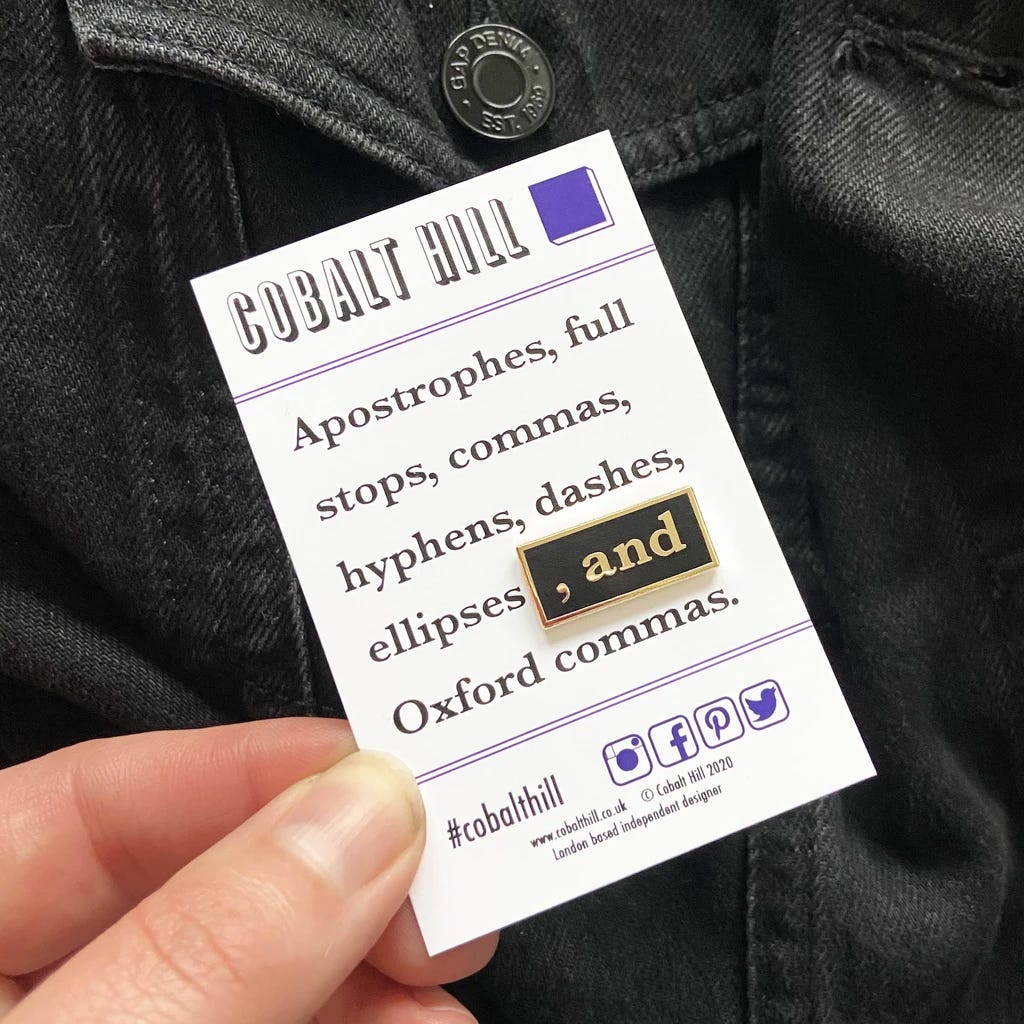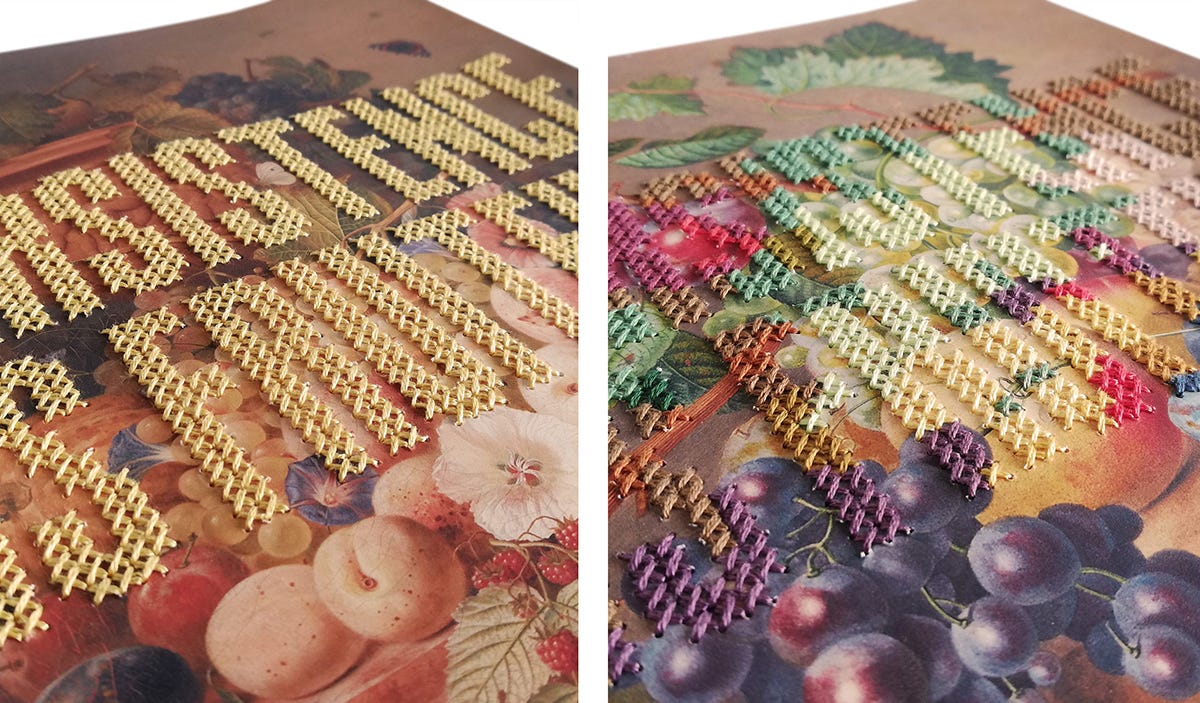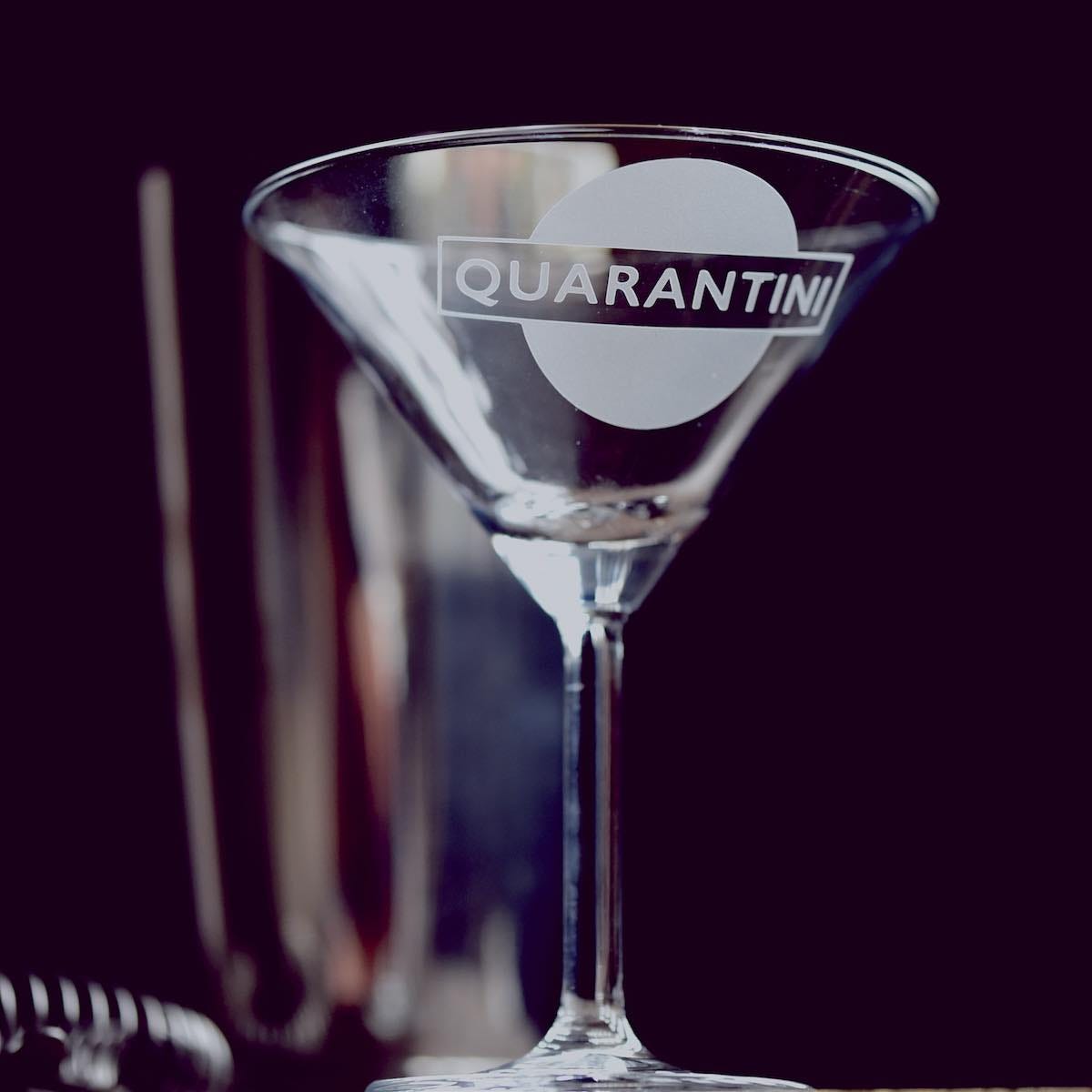Issue 3: snippets from 2020
An almost certainly incomplete list of the things we saw (mainly online) this year that we liked.
It just so happened that we chose the last Friday of the month to send this newsletter. And it just so happens that the last Friday of December is the 25th. And as we happen to be the type who feel bound to honour such schedules – even when we’ve only really been explicit about them to ourselves – here we are in your inbox on Christmas day.
As is traditional in publishing/newslettering at this time of year, we’ve put together an end of year list, of sorts. There is no specific (or deliberate) link between one item or another, aside from our appreciation of it. So, to give it some order, we’ve presented it as an A-Z list. (Some subheadings are stronger than others, because, like with the scheduling - once we set out on following a format, we felt obliged to see it through 😉)
It’s been an interesting exercise compiling this list. It’s shown us just how much of our year has been spent ‘doom scrolling’ coronavirus facts and figures, Brexit negotiation updates, and commentary on case after case of the UK government’s inadequacies (incompetence, even). Not to mention the highs and lows of the Black Lives Matter movement, and the protracted demise of Donald Trump’s presidency.
But we’ve done our best to exclude negativity here, and include only the things that made us smile, compelled us to do something (usually spend money, haha), or just made us go: “hmm, that’s really interesting”.
You can scan through the list like an eclectic social media newsfeed. Or you can click the links and explore more from the original authors/creators. However you decide to consume it, we hope it brings you some joy, too.
NB: this newsletter has turned out pretty long, and may be cut off by some email clients. If that’s the case for you, you can view it in full online instead.
Advice
A message on behalf of researchers of the future at the beginning of the pandemic:


Related:

Book box by Precious
Our friend Foluke Akinlose (founder of the Precious online magazine and awards) launched a quarterly self-care book box. It contains a book written by a Black author and four products from Black-owned businesses. Plus, it gives subscribers the opportunity to join an online chat with the author after they've read the book.
Foluke says the box was "born out of a desire to create something uplifting" in response to the Black Lives Matter movement. "We felt a responsibility to be a positive force and provide a platform for Black voices in literature and business".
Cheese
Hat tip to @Treacle_A
Desert print
We are incredibly privileged that our day job has allowed us to work from home throughout 2020. So, aside from the restrictions on our leisure time, we’ve personally not been too affected by the pandemic (touch wood).
To pay it forward, we decided to spend the money we were saving on our daily commute on some art instead. It's win win - an artist makes a sale, and our home office looks nicer.
Our first purchase was ‘Suede and Rosé Desert’ by Kristine Brookshire.
Essex girls
Writer Syd Moore and the group she founded – the Essex Girls Liberation Front – recorded a victory in their campaign to change perceptions of Essex girls.
The Oxford University Press (OUP) agreed to remove the “very offensive” definition of ‘Essex girl’ from its Oxford Advanced Learner’s Dictionary, which is aimed at foreign language students learning English.
The definition reads: “name used especially in jokes to refer to a type of young woman who is not intelligent, dresses badly, talks in a loud and ugly way and is very willing to have sex”.
(However, the move won’t extend to the Oxford English Dictionary (OED). The OUP says “nothing is ever taken out of the OED” because “it’s a historical dictionary”.)
Syd says the attributes of Essex girls are actually “something that is positive”. They are “enterprising, bold, and sassy. In this day and age, to be sexually autonomous, to know what you want, to avoid being manipulated, really is a positive thing”.
‘Flow’
Beth Moffat is an artist who uses coloured pencils to create amazingly realistic seascapes. The below piece is called ‘Flow’, and it now hangs on our office wall.
See a timelapse video of Beth creating this artwork.
Geometry
We love the pattern, as well as the colours, of this knitted jumper by Gem Rose, AKA, GMMRS.
‘…Hungry Kitties’
This strange, witchy artwork, ‘Pretty Birdies, Hungry Kitties’, by Julia Soboleva, caught our eye as soon as we saw it. So we bought it.
‘Into The Still’
We’ve been fans of artist Nomi Stricker’s oil paint and collage works for some time. We used our aforementioned art buying exercise as an excuse to purchase this work, titled ‘Into The Still’.
Just do it (ladies who)





Know what?
We don’t actually have anything that fits under ‘K’.
So, instead, let us share this incredible experimental Polaroid collage by Ina Echternach. This piece - in which Ina has used a microwave to manipulate the photographs - is a commentary on climate change, and part of a series called ‘Burning Trees’.
Lori Black
We had our mind slightly blown by the revelation that child actress Shirley Temple’s daughter - Lori Black - used to play bass in the American rock band, the Melvins. The band is credited with influencing the development of both grunge and sludge metal.
Read an extract from Mark Yarm’s book, ‘Everybody Loves Our Town’, in which Buzz Osborne, the Melvin’s frontman, recounts his interactions with Shirley.
Hat tip to Robyn Pennacchia for this morsel.
Maritime embellishment
Ella Beaudoin had a fisherman’s jumper which she thought needed a little “spice”, so she added an awesome knitted octopus to it.
Norman, Peter
We were reminded via a Twitter thread of the story behind this image from the medal presentation for the 200m at the 1968 Olympics. You may know about John Carlos and Tommie Smith - the two men giving the Black power salute - though probably not about Peter Norman, the Australian sprinter who came second. But his story is worth telling, too.
Read a full account by Riccardo Gazzaniga. History.com provides some further context.
Oxford commas
You’re either a fan of the Oxford comma, or you’re not. We bought ourselves this enamel pin made by Cobalt Hill. You can probably guess our position.
‘Persistence Is Fruitful’
*Self-promotion warning*
This year we've spent much of our downtime doing embroidery. Our favourite achievements are these two 'Persistence Is Fruitful' pieces.
In February 2017 we saw a typographic print by Anthony Burrill that featured the phrase 'Persistence Is Fruitful'. It was not long after the first women’s marches (at which the 'resist' slogan was very prominent), and shortly after the time Senator Elizabeth Warren was rebuked for carrying on reading a letter despite warnings to stop, and one of the comments made about the incident was, “nevertheless, she persisted”. So, Anthony's piece really resonated with us as a perfect coalescence of two powerful events.
When we contacted Anthony earlier this year, he very generously agreed to allow us to use his phrase in our own artworks, which also utilise paintings from The Rijksmuseum's public domain collection - 'Still Life with Flowers and Fruit' by Eelke Jelles Eelkema, 1824 (yellow) and 'Stilleven met vruchten' by Jan de Bruyn, 1700 - 1800 (camouflage).
Quarantini
For many of us, the answer to the trials and tribulations of 2020 has been a stiff drink. Vinegar & Brown Paper came to the rescue with this etched glass.
Rocket kettle
We’ve got a saved search for this on eBay, but we’ve had no luck yet tracking one down…
Staffordshire dog
We are pretty taken with the customisation that Amy Hastings has done on this classic Staffordshire dog. We’ve added it to our wish list.
See a video of Amy creating this piece.
It is said that - as well as being a quintessential Victorian bourgeois status-symbol ornament - these dogs (which were sold in pairs) were used by women to indicate their 'availability'. Placed in the front window, if they were turned back-to-back, it meant the woman's husband was at home. But, if the dogs were facing each other, it meant her husband was away, and it was safe for her lover to visit.
Thank you
One of the frontline services we’ve been most grateful for during the pandemic has been the post. So when we saw Liz Harry’s ‘Thank You Postie’ letterbox signs, we had to get one. (They’re also available in a USPS variation.)
Uncovering everyday histories
We read an interesting article about ‘diary hunters’ - people who buy and sell the diaries of strangers. And like the author, we were torn between the ‘compelling mystery and intrigue of reading someone’s personal history’ while also being ‘troubled by the inherent voyeurism’.
Then we came across another story about a couple who, while renovating a house, discovered a diary that had been hidden away for more than 100 years. The efforts of Christina Lalanne to uncover the full details of the author's history, and the mystery of the love story he documented, were incredible.
And as a writer driven by curiosity, we must admit that we’d really quite like to explore an obscure diary of our own!
Votes for women chorus
Hat tip to performer, feminist, and historian of suffrage theatre, Dr Naomi Paxton, for sharing a story about a fascinating tactic in the fight for women’s suffrage in the early 20th Century.
The Actresses' Franchise League (a group formed to convince members of the theatrical profession of the necessity of extending votes to women) once met in the grand house of a suffragist who had bought 615 parrots. Her intention was to teach them to say 'votes for women' in unison. While the parrots did learn the phrase, they couldn't say it all together.
W features in…
…the titles of three of the newsletters that we’ve most enjoyed reading this year. They are:
The Ann Friedman Weekly, from US writer, podcaster, and pie chart illustrator Ann Friedman
The Whippet, by Australian writer and editor McKinley Valentine
Three Weeks, by a writer based in the UK with a penchant for ‘Motivational Britney’
X, Y, Z and per se and
Do you know the history of how the ampersand - & - came to be? We didn’t until this year.
The short version is that the symbol is a combination of the letters E and T ('et' being the Latin word for 'and'), and the sound comes from the trend in the early 18th Century for schools in England to use the phrase 'per se' (essentially meaning 'by itself') when spelling out words.
The ampersand was considered the 27th letter of the alphabet, and when said out loud, was expressed as: "...X, Y, Z and per se and". This was inevitably slurred into the single term, ‘ampersand’.
Yes, we cheated a bit with that last one to get us to the end of the list. We took heed of this illustration by Worry Lines (hat tip to the Wellcome Collection) and called it done.























